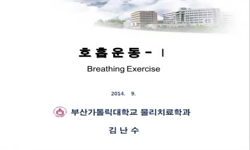The purpose of this study was to develop a core exercise program for balance and lower extremity muscle strength and to evaluate its effects using biomechanical variables. A total of 26 participants were included in the study and 3 dropped out during ...
http://chineseinput.net/에서 pinyin(병음)방식으로 중국어를 변환할 수 있습니다.
변환된 중국어를 복사하여 사용하시면 됩니다.
- 中文 을 입력하시려면 zhongwen을 입력하시고 space를누르시면됩니다.
- 北京 을 입력하시려면 beijing을 입력하시고 space를 누르시면 됩니다.
https://www.riss.kr/link?id=A107313662
- 저자
- 발행기관
- 학술지명
- 권호사항
-
발행연도
2021
-
작성언어
English
- 주제어
-
등재정보
KCI등재
-
자료형태
학술저널
-
수록면
957-968(12쪽)
- DOI식별코드
- 제공처
-
0
상세조회 -
0
다운로드
부가정보
다국어 초록 (Multilingual Abstract)
The purpose of this study was to develop a core exercise program for balance and lower extremity muscle strength and to evaluate its effects using biomechanical variables. A total of 26 participants were included in the study and 3 dropped out during the study. The participants who completed 8-week core exercise program were 10 in control group (CG) and 13 in exercise group (EG). Body balance and the lower extremity muscle strength were examined pre and post exercise program by using AMTI force platform and Isokinetic dynamometer. Center of pressure (COP) ranges showed a significant difference between groups (F=7.75, p=.011). There was a statistically significance in correlation effects of M/L COP velocity but not in A/P COP velocity. Hip extensor showed a significant difference between pre and post-test (F=6.82, p=.016). Participants in the EG showed statistically larger values A/P COP range, M/P COP velocity, and A/P COP velocity than in CG at pre-test (p<.05). Participants in training group decreased their level of M/L COP velocity at post-test compared with pre-test. Knee flexor in training group found to be increased after the exercise program significantly (p<.05). The correlation effect of body balance and lower extremities strength showed negative correlation between A/P COP velocity and Ankle plantar-flexor (r= -.25, p=.046). The core training was found to be an effective method for improving the balance and increasing isokinetic strength of lower extremity.
목차 (Table of Contents)
- Abstract
- Ⅰ. Introduction
- Ⅱ. Methods
- Ⅲ. Results
- Ⅳ. Discussion
- Abstract
- Ⅰ. Introduction
- Ⅱ. Methods
- Ⅲ. Results
- Ⅳ. Discussion
- Ⅴ. Conclusions
- Reference
동일학술지(권/호) 다른 논문
-
중국 체육학 전공 여대생의 객체화된 신체의식이 신체존중감에 미치는 영향
- 한국체육과학회
- 만리쌍(Wan, Lishuang)
- 2021
- KCI등재
-
중년 여성 여가스포츠 참여자의 여가태도와 여가인지 및 심리적 행복감 간의 관계
- 한국체육과학회
- 양원희(Yang, Won-Hee)
- 2021
- KCI등재
-
- 한국체육과학회
- 김은혜(Kim, Eun-Hye)
- 2021
- KCI등재
-
- 한국체육과학회
- 박선기(Park, Sun-Ki)
- 2021
- KCI등재





 DBpia
DBpia





